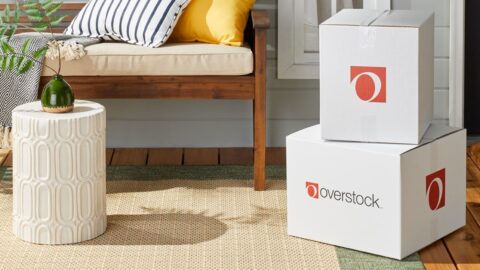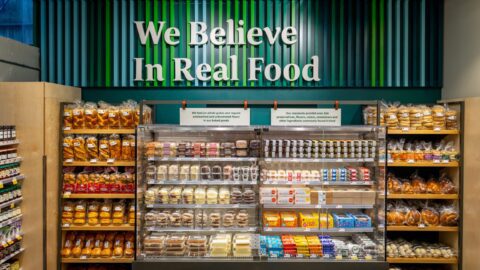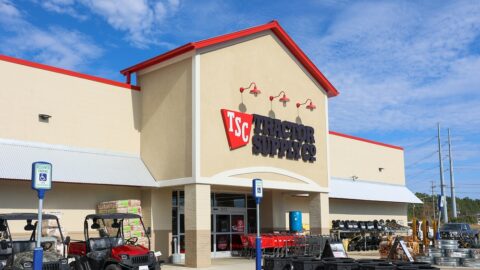Most retailers are familiar with the success Tesco has had with its Clubcard loyalty program. With more than 13 million active card holders and 85% of the chain’s sales captured on a loyalty card, Tesco is often cited as the model other retailers look to emulate as they build loyalty programs of their own.
However, most retailers are less familiar with dunnhumby, the company that has been working behind the scenes with Tesco since 1994 to help Tesco achieve its goal of earning the lifetime loyalty of its customers. Founded in the UK in 1989 by Clive Humby and Edwina Dunn, dunnhumby has grown substantially over the past few years through a joint venture with Kroger and more recently via a similar partnership with French grocery giant Groupe Casino.
In addition to its work with major retailers, dunnhumby also provides marketing consultancy services to more than 150 of the top consumer products brands in the world, helping them to turn data and insights into relevant consumer propositions including new products, improved marketing programs, and reshaped portfolios.
While the most visible component of a loyalty program is the key fob or the card itself, dunnhumby has shown its clients that the real value comes in segmenting a customer base and developing tailored offers based on actual behavior. As the company has expanded in recent years with offices in the U.S., their work is no longer limited to the grocery sector (see sidebar on Home Depot), as other retail verticals are looking to strengthen their relationships with customers.
APPLYING RELEVANT RETAILING
Retail TouchPoints recently had the opportunity to chat with Matt Nitzberg,Practice Leader for dunnhumby USA, to get his insights into how relevance marketing is changing the landscape for retailers and consumer products companies. Although there is an enormous of data available on both sides of the supply chain, Nitzberg pointed out that “translating consumer data into profitable demand is still a challenge for many companies.”
Advertisement
“Through our work with some of the top brands, we’ve seen a direct correlation between being more relevant to the consumer and the efficiency of marketing activities,” Nitzberg said. “Those retailers and brands that put the shopper and consumer at the center of the decision-making process are enjoying consistent, profitable, and sustainable growth.”
While most retailers and CPG companies spend a disproportionate amount of their time and budgets trying to attract new customers, Nitzberg pointed out that most merchants and brands have a much bigger and more attractive opportunity to build profitable demand by better understanding and meeting the needs of their current customers. “By tailoring propositions for each segment and even each household, retailers and manufacturers can enhance the shopping and product usage experience for their customers and enjoy profitable short and long-term growth,” Nitzberg said.
Nitzberg pointed out that ROI is typically much higher from marketing to current customers than an acquisition-oriented strategy. “While there is typically substantial headroom among current customers, most merchants and marketers are not trained to look for it and their traditional insight sources are not granular and sensitive enough to detect the opportunity and identify winning strategies.” The lack of focus on existing customers generates enormous waste and works against growing loyalty, as resources are spent inefficiently on an ineffective strategy. Rather than chasing new customers, who are often less profitable because they are typically chasing a discount offer, Nitzberg suggested that retailers and their vendor partners are better served to focus on the “right consumer and providing the right positioning, products, packages, pricing, and promotion.”
THE LOYALTY FACTOR
In making the transition to relevant marketing, Nitzberg said brands and their retail partners need to “set aside the old rules of marketing. If you are going to drive sustainable growth in the current business climate, you have to grow the number of loyal shoppers and also grow spending among those shoppers.” Nitzberg mentioned that dunnhumby helps clients segment their consumers and shoppers into loyalty tiers, and then works with clients to devise strategies and tactics to move consumers and shoppers to higher levels of loyalty. “Clients are initially surprised and then delighted with the focus and efficiency of this approach.”
In order to get consumers to engage deeply across the store and within a brand franchise, Nitzberg suggested that retailers and manufacturers need to learn more about the lifestyles of their customers based on their actual behavior. “The best way to sell more and to sell at higher prices is to offer propositions that are really relevant and compelling,” he said. “And that can only be achieved if you have a better understanding of your customers than your competitors.”
For example, Nitzberg said if a retailer sees that a key customer buys organic products in a few categories, sending a relevant offer about other organic or healthy products will produce substantially better results than a mass mailing to all customers. “The key is to know how customers are behaving today and what factors are influencing their shopping decisions.”
While retail POS data is more readily available to retailers and their suppliers today, Nitzberg pointed out that simply looking at what sold through is not enough to learn about what is motivating your best customers. “You need to have a feedback loop to that puts “who and why” at the center of your scorecards. We have detailed shopper data on more than 40 million households, and we use the resulting insight to help our clients win.”
As retailers and suppliers become more customer-centric in their strategies, Nitzberg predicted that the metrics measuring success will begin to change. For example, he offered that instead of focusing exclusively on market share and results across “average customers,” retailers will look harder at loyalty and headroom among segmented groups of customers. “This will drive new approaches to the marketplace and new levels of success.”















